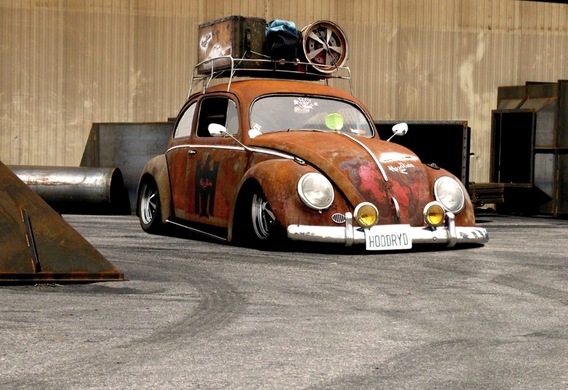
Rules for the carriage of goods
The main rule to be known to each driver is the mass of the load carried, the load distribution of the axles and the load on the roof shall not exceed those specified by the manufacturer of the specific vehicle.
The Road Traffic Rules also stipulate that the goods may be at least 1 m in front and at the rear of the vehicle. If the goods exceed the dimensions of the vehicle, the maximum allowed projection is 40 centimeters per side.
The traffic rules clearly regulate the size of the goods that the car can carry
Mandatory condition-mark the protruder with identification (retro-reflective markings or, in the absence of such, red or white matter), and in the dark time shall be marked by a lamp (white in front, red on the rear, orange on the sides) or equipping it with a white colour.
The SDA also stipulates that on a motor vehicle carrying large, heavy, especially valuable or dangerous goods, only the passing beam headlamps shall be switched on, irrespective of the weather conditions and the time of day.
The rules are limited and the maximum speed of traffic on the laden vehicle: by city-not more than 60 km/h, on the route-not more than 100 km/h.
It is also necessary to know that if the length of the goods exceeds 1/3 of the length of the bodywork, it can only be carried if a single axle trailer is fitted. It should be borne in mind, however, that the driving of a motor vehicle with a trailer has its own characteristics.
Deployment and securing of cargo
The driver must monitor the placement, fixation and condition of the oversized heavy goods. In no case should they violate the stability of the vehicle or make it difficult to manage. The anchorage shall hold the load firmly on the ground so that it does not displace in the movement, fall out of the vehicle, drag it behind and endanger pedestrians and other traffic participants.
The load of the vehicle shall not be closed by the review or by the driver's movements. The object must be placed in such a way that it does not block light devices: stop lamps, blinkers, etc.
It is necessary to keep the load on the roof in the passenger compartment or in the trunk of the car so that during the movement it remains stationary
In no case shall the transported load raise dust, pollute the environment or make noise. If it is necessary to fix the load on the roof of a car, it is best to predetermine the fixes-they can be installed on the roof of the car by the manufacturer or sold separately. Thanks to them, the roof of the car will not get damaged, and there will be no scratches on the varnish.
Once again, it is necessary to find information on the permissible load on the roof of a particular vehicle.
In the event of bad weather, it is best to put the load of plastic sheeting in the cargo and fasten it well-most of the wind is blowing it.
If the motorist intends to transport furniture, it is necessary to inspect it for the presence of movable parts-doors or boxes of cabinets. They also need to be firmly fixed.
It is important to understand that the increased weight of the car will affect the fuel consumption and increase the fuel consumption.
So, the main thing in the transport of goods in the car is to remember the rules of its placement and the safety of the trip. Experts and experienced motorists advise the maximum handling of the load and choose transportation in the cabin on the roof or in the trailer.









